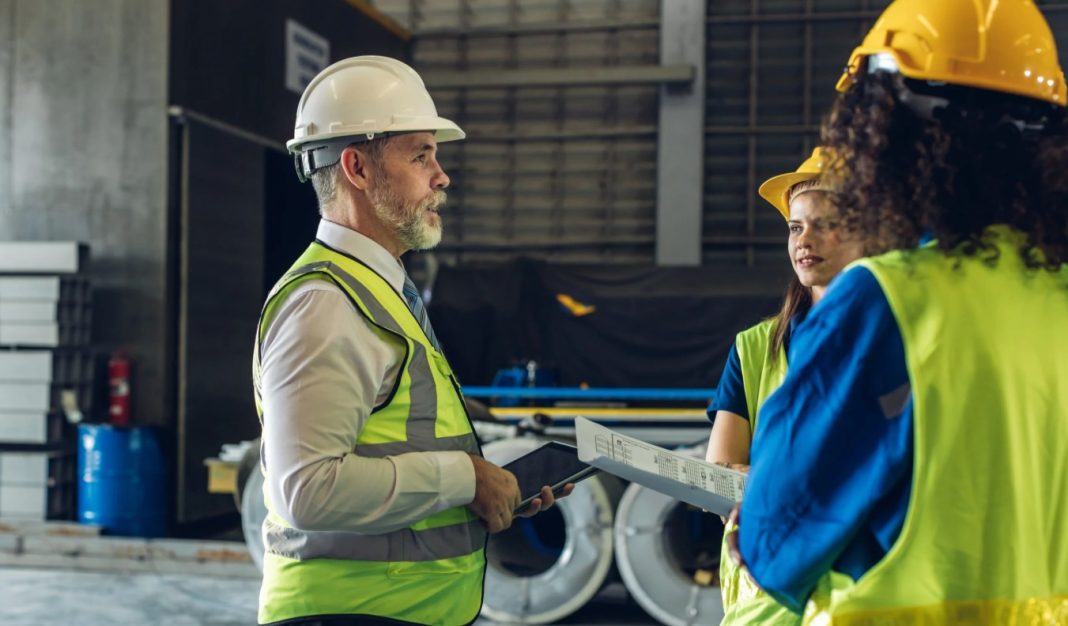Workplace safety has long been a cornerstone of operational success, yet recent events have highlighted just how critical it remains. In 2023, the Bureau of Labor Statistics reported over 2.6 million nonfatal workplace injuries and illnesses in the U.S., underscoring the ongoing risks employees face daily. With industries evolving and tasks becoming more complex, traditional approaches to safety no longer suffice. Addressing these challenges requires vigilance and innovation, as emerging technologies offer new ways to protect workers while enhancing productivity.
At the same time, evolving safety technologies are also helping companies align with OSHA regulations, reducing risks while improving compliance with workplace safety standards. OSHA has recognized the role of automation, AI, and ergonomic solutions in enhancing workplace safety, noting that these advancements help identify hazards before they lead to costly violations or injuries.
Robots on the Frontlines
In the age of automation, robotics is transforming workplace safety by taking on the most repetitive and dangerous tasks, like welding, heavy lifting, and handling hazardous chemicals. By removing humans from high-risk environments, robots significantly reduce the likelihood of workplace injuries.
These machines are designed to complement human efforts, not replace them, offering a layer of protection that enhances overall safety protocols. For instance, robotic arms equipped with protective covers can operate in extreme conditions, such as high heat or exposure to harmful substances, sparing workers from these risks entirely.
Some manufacturers have already seen the benefits of automation. For example, BWIndustrie, a precision machining company, introduced collaborative robots (cobots) to handle repetitive assembly tasks. The company reported improved worker safety and a reduction in the risk of musculoskeletal disorders (MSDs) associated with repetitive movements. Additionally, the cobots helped reduce operator exposure to grinding dust and decreased the physical load carried by workers.
But it’s not just about the robots themselves — technological advancements are also focused on worker comfort and efficiency. Antistatic safety gear and smart controls ensure seamless collaboration between humans and machines, fostering an environment where both can perform their best.
Of course, implementing robotics requires investment, not just in the technology itself, but also in worker training and infrastructure adjustments. Facilities must assess both the safety benefits and the cost of integration to ensure these solutions are both practical and effective.
Smarter Safety
As robotics take on the heavy lifting in high-risk environments, artificial intelligence (AI) is stepping in to monitor and protect workers in real time. AI-enabled workplace safety tools, like smart cameras and connected PPE systems, are changing how risks are managed altogether. These technologies act as a second set of eyes on the ground, identifying hazards that might otherwise go unnoticed. For instance, smart cameras can detect when a worker enters a restricted area without proper protective equipment or when machinery shows warning signs of a breakdown.
What sets AI apart is its ability to learn and adapt. Over time, these systems analyze workplace data to predict potential hazards, allowing safety teams to act proactively instead of reactively.
AI-driven safety systems have already been adopted in some industrial facilities, where they help detect potential hazards before incidents occur. By providing real-time insights, these tools support a more proactive safety culture and reinforce best practices in hazard mitigation.
This keeps workers safe and builds trust, as employees feel more confident knowing there’s technology looking out for them. Connected systems even enhance communication during emergencies, ensuring that everyone is on the same page when seconds matter. However, AI integration must be approached carefully. False alarms or excessive notifications can lead to alert fatigue, making system calibration essential for accurate and actionable insights.
Exoskeletons are Lifting Expectations
Ergonomic innovation is taking workplace safety to new heights, addressing one of the most persistent challenges — physical strain. Exoskeletons, once the stuff of sci-fi, are now practical tools in industries like manufacturing and construction. These wearable devices provide support to the body during heavy lifting, repetitive motions, or awkward postures, significantly reducing the risk of musculoskeletal injuries.
According to a 2024 report by Safetytech Accelerator, exoskeletons can reduce injury risk by 58 percent while boosting productivity by 10 percent. Similarly, Wegmans Food Markets reported zero back injuries over 26,000 work hours among exosuit users during a 21-month field study, along with a 1.5 percent productivity increase.
With OSHA’s ongoing focus on reducing ergonomic-related injuries, wearable solutions like exoskeletons offer a promising way to improve workplace safety while meeting regulatory expectations. Industries are seeing the benefits of exoskeletons firsthand, from warehouses to manufacturing plants. By reducing strain on the body, these devices protect workers from injury and enhance overall efficiency.
That said, exoskeleton adoption isn’t without challenges. Workers may require training to adjust to wearing them comfortably, and facilities must evaluate whether the productivity gains justify the initial investment.
From robotics to AI and exoskeletons, these technologies are mitigating risks and creating environments where safety and productivity thrive together. As companies explore these innovations, they must also consider the balance between cost, worker training, and regulatory compliance to ensure long-term success.
By investing in smarter solutions, organizations can lead the way in cultivating workplaces that prioritize well-being, adapt to modern challenges, and inspire confidence in every worker. After all, a safer workforce is a stronger workforce — and that’s a win for everyone.
By: What the Future of Workplace Safety Looks Like | Manufacturing.net






